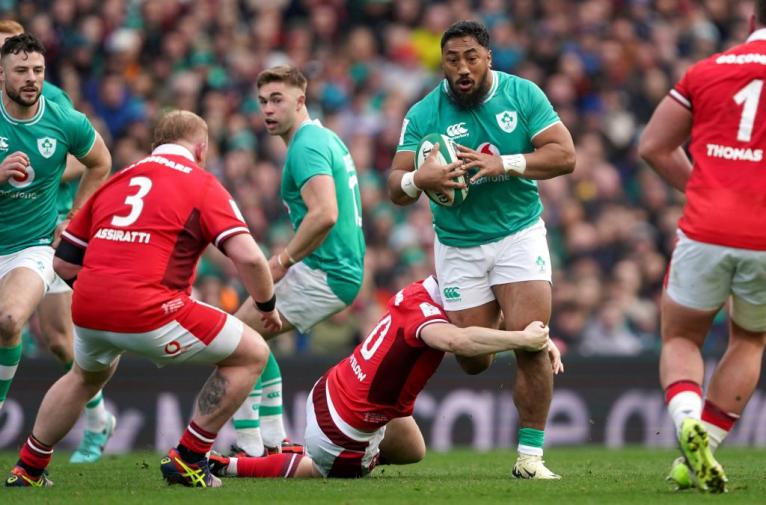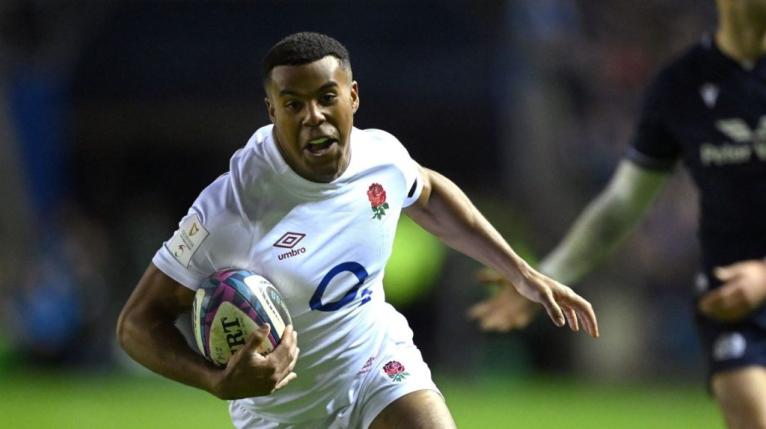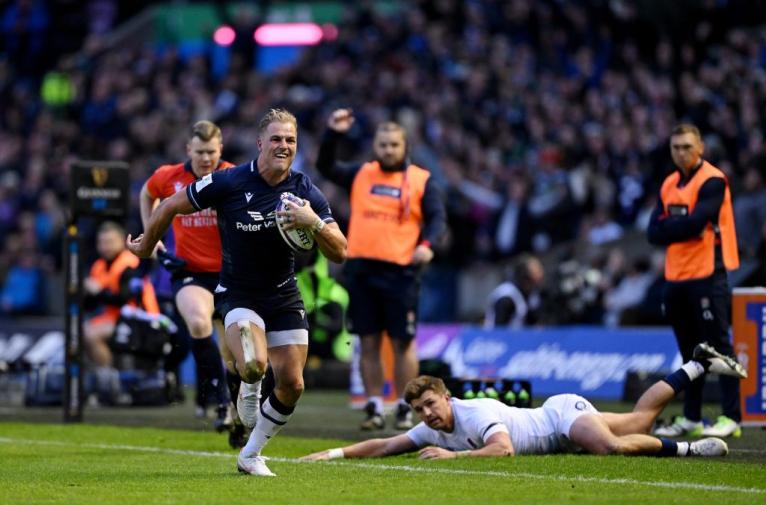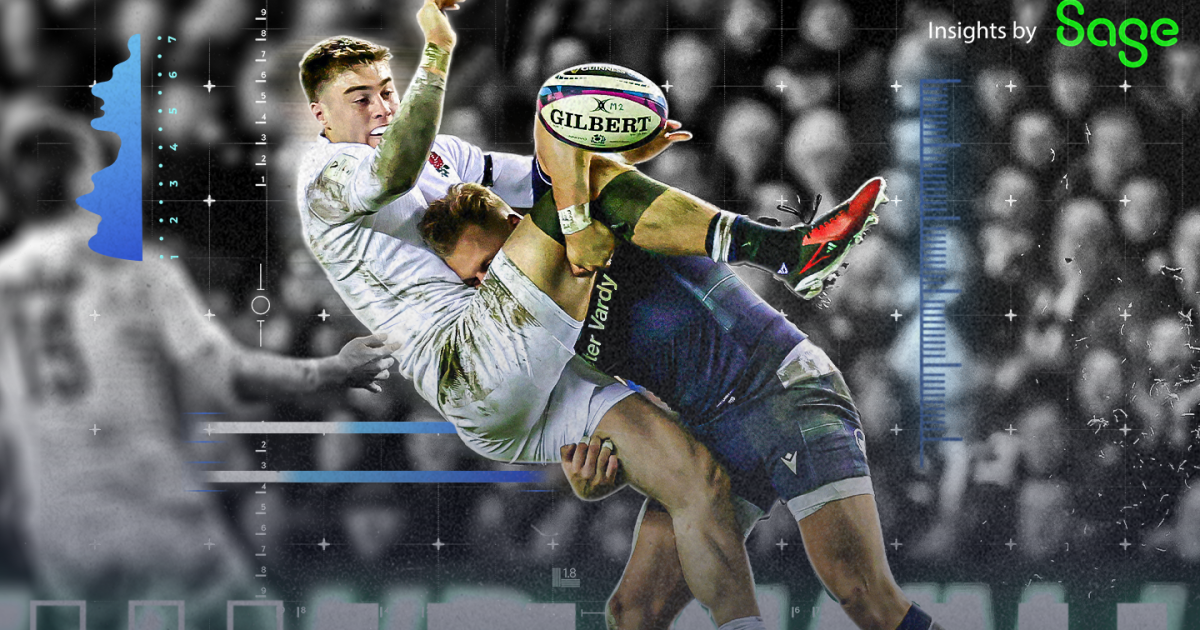We are at the virtual halfway point of the Six Nations. For some, it will be all downhill from now on; for others it will be a struggle to post one or two wins and gain respectability.
‘The Probables’ [Ireland, France and England] have won six of their nine matches, and their only loss to one of the ‘Possibles’ occurred on Saturday at Murrayfield. The result of that match means Scotland once again look the likeliest to emerge from ‘The Possibles’ and make a run at the title.
The Probables – Ireland [3-0], rising from the World Cup dead!
Ireland have stuck to script and risen again after World Cup disappointment. The men in green have barely skipped a beat in the first two rounds of the 2024 tournament, with many of their KPI’s holding steady, or even improving:
- Increased average time-in-possession. Up two minutes from 20.5 minutes per game in 2023 to 22.5 minutes in the first three rounds of 2024, with the proportion of possession up 5% from 52.5% to 57.7%. That kind of ball is milk and honey to the men from the Emerald Isle. Give Ireland enough and they will hurt you – a five-try average so far in 2024, compared to four in 2023.
- Lower tackle count. Defence is made easier because the opponent has less time with ball in hand. Ireland only make an average of 152 tackles per game, 60 fewer than Italy at the foot of the table [212]. It is like keeping a good snooker potter away from the green baize; the fewer chances they get, the more they will tend to snatch at their opportunities.

- Extended range of final quarter dominance. Ireland’s points differential in the last 20 minutes was 50-10 in 2023, it currently stands at 40-0 one year later. Compared to the World Cup, their lineout has been a rock, with a 92.5% retention rate providing a lethal platform for 13 of their 15 tries so far.
- Discipline is the one real caveat. Ireland have been on the receiving end of the penalty count in all three matches, with an overall of balance of 29 awarded and 37 conceded. Loosehead prop Andrew Porter has been the major target for officiating ire with six penalties given up.
- Key players for have been evergreen new lineout captain Tadhg Beirne, with a tremendous all-round performance – 22 carries with four clean breaks and two tries, 10 lineout takes with two steals apiece at lineout and at breakdown – and the imperious James Lowe, with his 33 carries for 265m and seven clean breaks sitting neatly alongside his true point of difference – the longest kicking game in the tournament from the left wing [27 kicks for 1226m].
The Probables – France [1-1-1] in freefall?
Les Bleus are one of two sides falling away from the high standards they set at the same tournament in 2022 and 2023. There is some evidence of both deterioration at the lineout and in try-scoring capacity outside set-piece.
- France’s ratio of possession always tends to run low at around 45% because of the amount of ball they kick away – typically 30+ times per game. They want to win the long kicking duels between the 22s and set up their lethal kick-returners Damian Penaud, Thomas Ramos and up until the end of 2023, all-world scrum-half Antoine Dupont from the back.
- The Dupont-less difference lies in a diminished capacity to counter in ‘unstructured’ situations outside set-piece: the Tricolores scored a massive 57% of their tries in 2023 [12 of 21] with the Toulousain nine in harness, at a rate of 2.4 ‘unstructured’ tries per game. Without him in 2024, they have scored only one of five tries from turnover counters or kick returns [0.33%].
- Miscellaneous offensive contractions. Offloads have slipped slightly from 1 every 12 carries in 2023 to 1 every 14 one year later, dominant gain-line carries are 11% down and France’s try-scoring ability has plummeted from over four tries per game to a mere 1.25 in the space of 12 months. Les Bleus only averaged a measly 0 point per visit to the Italy 22 in the third round. Can it really all be down to the influence of one single player?
- The absence of two ‘talismanic’ players illustrates a lack of continuity between club and country. Centre Yoram Moefana was originally preferred to Louis Bielle-Biarrey on the left wing against Ireland. The ridiculously-talented 20-year-old already had three clean breaks and a game-clinching try to his name after only one game versus Scotland, only to be sidelined with injury for the third-round clash with the Azzurri. No 8 Greg Alldritt had shown signs of returning to his best form with 21 carries, five tackle busts, 27 tackles, and three breakdown pilfers before he was cruelly injured at Murrayfield. The coaching staff urgently need to get the French rugby public back onside, and committing to attack will be a key criterion in selection for Fabien Galthié in the last two rounds of the tournament.
The Probables – England [2-1], holding steady or treading water?
Steve Borthwick has a healthy record of eight victories from his past 10 matches. It has bought him precious time to re-engineer England’s defence under ex-Springbok coach Felix Jones, and streamline the attack. The big question is whether it is a false position, with probably England’s two toughest assignments [home to Ireland and away in Paris] yet to come?
- Defence has clearly been one of the main areas of interest, with world champion Jones arriving to instil the Springbok version of blitzing mayhem. Thus far the signs are promising. A 76% tackle completion rate in 2023 has risen slightly to 79.5%, while the average of four tries per game given up last season has dropped to 2.7. Although they only have seven breakdown pilfers in three rounds of play, Jones’ charges do enjoy the lowest ratio of lightning quick ball [1-3 second ruck ball] allowed to their opponents at 38%, and that stat will be an important weapon against the Irish.

- The attack has shown signs of flatlining, because England are now investing most of their time and energy on the other side of the ball. Twenty minutes of active time-in-possession in 2023 has fallen to 18.5 one year later, with the 2023 average of 96 rucks set per game dropping to 82.
- The increased emphasis on defence now poses the ‘big issue’ for Steve Borthwick. With Marcus Smith due to return to action after injury, Henry Slade back at 13 and promising new blood such as Northampton’s Tommy Freeman transfused successfully [five dominant tackles, most run metres [167m] and offloads [3], second in clean breaks [3] by an English back], Borthwick has a choice to make. How does he add offensive punch with defence eating so much energy and focus? How can he make best use of young thrusters like Freeman, Smith and Ben Earl, with his class-leading 42 carries and 12 tackle busts? The visit of all-conquering Ireland will be telling.
The Possibles – Will Scotland [2-1] be kicking themselves?
Scotland will rue failing to put away France in round two, a match they should have won comfortably. That would have set the Scots up nicely with a 3-0 record, for a true tilt at Ireland in the final round of the championship. When Gregor Townsend and his staff look at the raw stats, they may also be kicking themselves they are putting boot to ball so much, and neglecting the strengths he has built into his team.
- Bloat in the kicking game! As a goalkicker, Finn Russell is top of the charts with 15/15. The real question is why the Scottish kicking game has ballooned from an average of 26 kicks for 826m per game in 2023, to a massive 39 kicks for 1226m one year on, with their half-backs Russell and Ben White the top two kickers in the competition. Scotland dropped below 1000m for the first time against England at Murrayfield, and they looked all the better for it.
- Up until the third round, the emphasis on the kicking game largely neutered the threat of giant wing Duhan van Der Merwe, scorer of one of the great long-range kick return tries at Twickenham in 2023. The naturalised South African averaged 10 carries for 96m with 1.6 breaks and 7.0 tackle-busts per game last year, but after two rounds in 2024, he sat on far less impressive figures: eight carries for 62m with one break and 1.5 tackle busts per game. The hat-trick against England rescued those stats somewhat, pumping the tyres back up to seven carries for 78m, with 1.3 breaks and 3.0 tackle busts per game.

- The tilt towards Scotland’s kicking game means although the ball is in play for long periods, they enjoy less of a share in that ‘active time’ – 18.5 minutes of 39 total ball-in-play [47.4%] compared to Ireland’s 22.5 minutes from 39 [57.7%], a whole four minutes less.
- Townsend will also be concerned his charges are currently losing the final quarter of games 29-3. Does that stat represent a mental or a physical fragility? Is the kicking game taking more out of Scotland than it is their opponents? Either way, the Scotland head honcho will want to get back-three talents such Van Der Merwe, Blair Kinghorn and newcomer Kyle Rowe [146m run, three breaks and nine tackle busts] into the game with ball in hand.
The Possibles – Wales [0-3], finally turning a corner?
Wales have lost their opening three matches but results have belied some strong performances and a transformed approach in Warren Gatland’s second coming as national coach. All three matches have given rays of hope, and Wales offered the most determined opposition to Ireland’s relentless advance on the Grand Slam in third round in Dublin.
- Wales have had one of the more significant statistical turnarounds of all in 2024. A total of 18.7 minutes active possession time and 49% overall possession in 2023 has been upped to 20.7 minutes of active possession time and 52% possession one year on.
- From being a team of kickers and kick-chasers in the opening 40 against Scotland, for their past five halves of play Wales have suddenly transformed into a team of ball-keepers and ruck-builders: 109 average rucks built at a 99% retention rate, increasing from 92 rucks at 95% in 2023. It is an impressive leap of faith from the previous Gatland game plan for the men in red.
- The set-piece remains rocky – the lineout is currently operating at a lowly 79% retention rate, and the starting front-row creaked and groaned against Ireland. Wales also lack the cohesion to be a genuine multi-phase attacking threat, with only one try occurring after fifth phase so far. But their management of the breakdown has been so outstanding it gives them a fighting chance against all comers – the penalty count sits at 35-20 in their favour, a sure sign of excellent breakdown control.
- It is no coincidence Wales’ two standout players both start in the back-row: Gatland has finally found a natural, worthy successor to Taulupe Faletau at No 8 in the shape of Aaron Wainwright [38 carries for 149m with seven tackle-busts, plus 15 lineout takes in three highly-energised 80-minute performances]; openside Tommy Reffell has improved his offensive production [25 carries, two clean breaks and five tackle busts] to add to his tournament-topping seven breakdown pilfers.
The Possibles – Italy [0-2-1], any new shoots of growth?
It remains tough to foresee a significant improvement in results on the horizon for the Azzurri. They improved from a 31-14 defeat at Twickenham in 2023 to a narrow 24-27 loss in the first round 2024, but then dropped off in the second round, from a combative 20-34 loss to Ireland in 2023 to a 36-0 procession against the same opponents. In the third round against France, a red card to centre Jonathan Danty gave them an opportunity to win the game at the death, with the game ending in a 13-13 draw. The Azzurri are trying to play a tighter, more controlled game under Gonzalo Quesada, but they are bleeding away some of their attacking promise under Kieran Crowley in the process.

- The attacking stats do not make for comfortable reading. Nineteen minutes of active time in possession in 2023 [50% possession] has dropped to only 16 [and 43%] in 2024. Ninety-six average rucks per game set per game in 2023 – with a 60% ratio of lightning quick ball, just behind Ireland – has fallen away to 72 average rucks one year later. Some 5.8 clean breaks per game in 2023 have fallen to 3.7 per game. The result is the Azzurri tend to be pinned to defence, averaging 212 tackles per game in 2024, even though they played one half against 14 men.
- Two individual glimmers of light are flanker Michele Lamaro with his class-leading 55 tackles [including five dominant hits], and stalwart wing Monty Ioane [263m run with three offloads, three breaks and nine tackle busts], but at present it remains uncertain how Quesada will replace the evident attacking drop-off from the Crowley era. The worry is Italy’s best chance of victory may already have passed, with that squandered last-minute opportunity against the French.
Sage is the Official Insights Partner of the Guinness Six Nations, enhancing the fan, player and coach experience through innovative new technology and enhanced insights to the game. Find out how Sage can support your business at sage.com and discover more rugby insights at sage.com/rugby




















































Ireland have won their last 11 consecutive matches in the Six Nations which is the joint most by any team in the history of the tournament!
Ireland are improving and becoming very clinical. They have tasted No 1 in the world and they want it back. It really lifts the nation.
Ireland have performed well in the 6 nations as you say Nic and are on track to stay at the top following on from 2023 result.
Ireland need to move on from the form in the 6 nation and live in the top 3 of the world for a sustained period if they want to crack on past QF in RWCups.
I note - Ireland building is sustained in the U20 level
Six Nations U20s Championship - Such a great Idea -Super rugby does not have this
2019 Ireland
2020 Cancelled but Ireland had won 3/3
2021 England
2022 Ireland
2023 Ireland
World Rugby U20 Championship
2018 France
2019 France
Tournament canceled 2020–2022.
2023 France (Ireland second)
2024 to be played June-July
Nick, I know its not one of the stats you have used above but the England team that started at Murrayfield averaged 50 caps each, the “settled” Scotalnd side under 40. There is a very weird distribution of experience in the England squad but if they do get rid of the old heads - Care, Cole, Ford etc - will they be better able to play the desired style or lack leadership?
So anyone that KNOWS 6N could see England were nowhere in reality with a need to fully rebuild - something they have only partially grasped unlike wales, France were a busted flush with coaches gone, Galthier floundering, players flogged in the Top14 and only Ireland had a chance to kick on. Scotland were always likely to irelands best hope of a contest, until Nic Berry and Brian MacNiece came along…
There are a few issues with the article. Despite somehow getting to a RWC semi final, England are nowhere near Probable status and should be swapped with Scotland on current form.
France’s failure at RWC 23 has massively hit their mindset. Psychologically, they need a reset of gigantic proportions otherwise they will revert to, Top 14 first, international rugby an afterthought again.
Ireland are allowed to play the way they are by less than acceptable officiating. Make no bones about it, with Easterby coaching, Ireland cheat, they break the rules at almost every facet of the game and generally referees, influenced by the media that Ireland are somehow playing the best rugby in the world, allow them. Scrums - Porter never pushes straight and immediately turns in. The flankers lose their binds and almost latch on to the opposition props. Rucks - they always and I mean always clear out from the side and take players out beyond the ball, effectively taking them out of being ready for the next phase. Not once do green shirts enter rucks from the rear foot. Referees should be made to look at the video of the game against Wales and see that Irish backs and forwards happily enter rucks from the side to effect a clearout, thus giving them the sub 3 second ruck speed everybody dreams about. They also stand in offside positions at rucks to ‘block’ opposing players from making clear tackles allowing the ball carrier to break the gainline almost every time. They then turn and are always ahead of play and therefore enter subsequent rucks illegally. Mauls - there is always a blocker between the ball catcher and the opposition. It is subtle but it is there.
Gatland still needs to break the shackles and allow his team a bit more freedom to play rugby. He no longer has a team of 16 stone plus players who batter the gainline. He has to adapt and be more thoughtful in attack.
Scotland are playing well but they have the creaky defence that leaks tries.
Ireland the best team in the World at the moment. Fickle France, as ever. Scotland the 2nd best team in 6N, robbed v France. Italy unlucky v Engl & France, just cant get the wins. Can Jocks deny Ireland the GS ?
Really good data provided NB, thanks. Massive world cup hangover for France who look a shadow of themselves. I think from reading through the laws Italy should of been awarded another shot at goal against France as no opposition player is to advance at all until the completion of the penalty kick. Also the ref should of got the water carrier off the field that was a distraction for the kicker.
Sorry, but how deluded and arrogant do you have to be to include England in your “probables"? You’re having a laugh.
Was this based in England having the easiest run in world cup history to a semi final? A run in which they limped passed teir 2 nations? Joke.
Well I think what you are seeing here is that teams are trying new things and trying to reinvent themselves. The hope is that changes now will yield big rewards in 4 years. This is especially true for England and Wales who are trying to make a big shift. The one team doing what they do a little better is Ireland who seem not to have taken much notice of their world cup failure. They are just going about business as usual making small gains and fine tuning their engine. France look like a wary boxer stumbling around the ring just carrying on the fight for the sake of it. Wouldnt say that theres been much of a change to the balance of power. The Irish are still setting the standard and France are letting theirs slip.
England, time to give Eddie a call…..